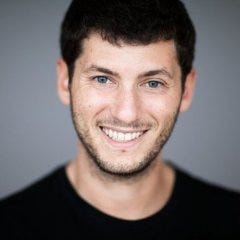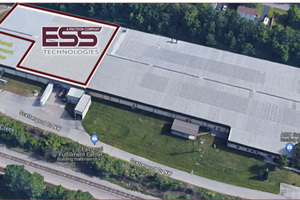What Medtech Can Learn from Web Software and Neuroscience
July 11, 2014
Online software applications like Facebook and LinkedIn have had a profound influence on everything from market research to journalism. Social media tools sites are also helping shape healthcare, enabling new forms of patient-to-patient interactions, for instance.
|
Jonathan Hirsch, the founder and president of a Syapse |
But we have barely scratched the surface of what is possible with software in healthcare, says Jonathan Hirsch, the founder and president of a Syapse, which is creating a cloud-based platform to help advance precision medicine.
"It is tragic that a business analyst at the Gap has more powerful tools to analyze millions of shoppers than a doctor has to understand their patients," Hirsch says.
Tackling the Problem
Several years ago, during stints at life a couple of science companies, Hirsch realized how inefficient the use of healthcare data could be. He decided to do something about it, and in 2008, founded Syapse to "bring the powerful software tools that other industries, such as finance and retail, have had for more than a decade to healthcare."
Hirsch and his colleagues at the startup were inspired in part by social media tools. "One of the things modern Web application software and cloud-based enterprise software does particularly well is place complexity below the surface, and enable users to perform powerful tasks in simple ways," Hirsch explains.
Syapse is working to apply the same data integration strategies used by companies like Facebook and Salesforce.com to healthcare. "When we build our software, we think about how we can remove process complexity through automation, and enable the physician to focus on the patient's data."
On a related note, the company's A round investor Chamath Palihapitiya, the founder and managing partner of The Social+Capital Partnership, was previously the head of user growth and analytics at Facebook.
Ultimately, healthcare software inspired by social media cloud-based enterprise platforms could make a big splash. For one thing, they could be leveraged to help integrate traditionally separate healthcare technology niches like medtech and molecular diagnostics. Software and sensing breakthroughs are putting traditional therapeutic medical devices and diagnostics on a convergence course, rather than a collision course, Hirsch says. "Instead of taking a blood draw, why can't the device you surgically insert as a pacemaker also detect the molecular state of your heart and blood?" he asks. "A patient's omics and molecular information are constantly changing over time, and the medical device industry is well positioned to provide the real-time measurement technology."
Ultimately, medical devices that integrate molecular data could provide data platforms (like Syapse's) with meaningful information that can be delivered at the point of care.
Refresh your medical device industry knowledge at MEDevice San Diego, September 10-11, 2014 |
In recent years, much has been made of the potential of smartphones and tablets to be used in healthcare. Traditional medical devices, however, still have their advantages when it comes to data harvesting. "As great as an iPhone is--and believe me, I love mine--it is not 'on your person' in the same way that a medical device may be. Medical devices have the opportunity to be worn 24/7, in direct contact with your body, or even implanted into your body," Hirsch says. "This provides incredible opportunity for quantification of clinically meaningful metrics, as opposed to softer metrics such as steps."
"I think the future for devices is bright. Software increases the value of reusable data, thus increasing the value of the devices that can generate such data," Hirsch says.
Advice on Integrating Data
There is essentially no limit to the complexity of healthcare data. As Syapse's chief technology officer, Tony Loeser, observed in an earlier interview, there are tens of thousands of concepts and interrelationships between biology and medicine.
There are a variety of strategies to deal with the complexity of healthcare data. Syapse's strategy is influenced by neuroscience.
"In neuroscience, one focuses on complex neural networks, with their many connections, branches, and feedback loops, and how they enable (or inhibit) information flow," says Hirsch, who earned a master's in neuroscience from Stanford. "I think about medical data and the organizations that generate, use, and share it as analogous to complex neural networks. The data, organizational structures, and learning feedback loops are highly complex and ever-changing."
Building software to effectively capture, mine, and report on medical and molecular data, requires a software architecture that embraces and leverages this complexity, Hirsch says. "That is the prime reason why we chose to base our technology on semantic computing principles."
Brian Buntz is the editor-in-chief of MPMN. Follow him on Twitter at @brian_buntz.
About the Author(s)
You May Also Like



